
Berbers, or the Berber peoples, also known as Amazigh or Imazighen, are a diverse grouping of distinct ethnic groups indigenous to North Africa who predate the arrival of Arabs in the Maghreb. Their main connections are identified by their usage of Berber languages, most of them mutually unintelligible, which are part of the Afroasiatic language family.
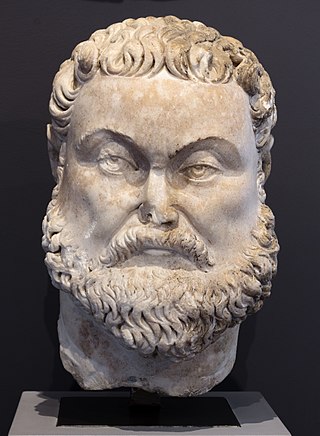
Maximian, nicknamed Herculius, was Roman emperor from 286 to 305. He was Caesar from 285 to 286, then Augustus from 286 to 305. He shared the latter title with his co-emperor and superior, Diocletian, whose political brain complemented Maximian's military brawn. Maximian established his residence at Trier but spent most of his time on campaign. In late 285, he suppressed rebels in Gaul known as the Bagaudae. From 285 to 288, he fought against Germanic tribes along the Rhine frontier. Together with Diocletian, he launched a scorched earth campaign deep into Alamannic territory in 288, refortifying the frontier.
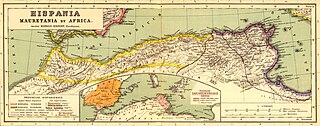
Mauretania is the Latin name for a region in the ancient Maghreb. It extended from central present-day Algeria to the Atlantic, encompassing northern present-day Morocco, and from the Mediterranean in the north to the Atlas Mountains. Its native inhabitants, of Berber ancestry, were known to the Romans as the Mauri and the Masaesyli.

Numidia was the ancient kingdom of the Numidians in northwest Africa, initially comprising the territory that now makes up Algeria, but later expanding across what is today known as Tunisia and Libya. The polity was originally divided between the Massylii state in the east and the Masaesyli state in the west. During the Second Punic War, Masinissa, king of the Massylii, defeated Syphax of the Masaesyli to unify Numidia into the first unified Berber state for Numidians in present-day Algeria. The kingdom began as a sovereign state and an ally of Rome and later alternated between being a Roman province and a Roman client state.

The history of North Africa during the period of classical antiquity can be divided roughly into the history of Egypt in the east, the history of ancient Libya in the middle and the history of Numidia and Mauretania in the west.
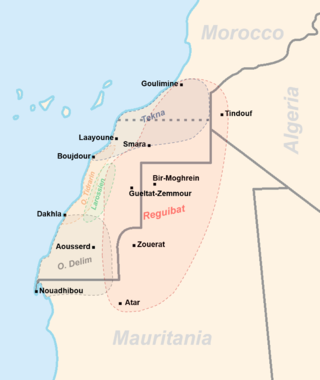
The Sahrawis, or Sahrawi people, are an ethnic group native to the western part of the Sahara desert, which includes the Western Sahara, southern Morocco, much of Mauritania, and along the southwestern border of Algeria. They are of mixed Hassani Arab and Sanhaji Berber descent, as well as West African and other indigenous populations.

The Barghawatas were a Berber tribal confederation on the Atlantic coast of Morocco, belonging to the Masmuda confederacy. After allying with the Sufri Kharijite rebellion in Morocco against the Umayyad Caliphate, they established an independent state in the area of Tamesna on the Atlantic coast between Safi and Salé under the leadership of Tarif al-Matghari.

The Zenata are a group of Berber tribes, historically one of the largest Berber confederations along with the Sanhaja and Masmuda. Their lifestyle was either nomadic or semi-nomadic.
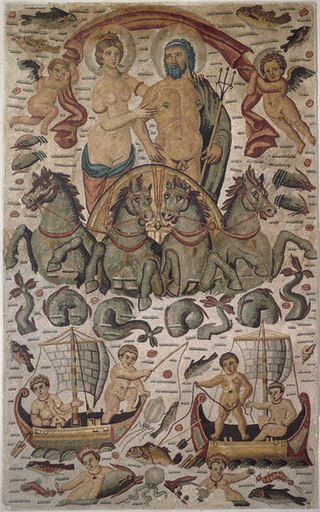
Cirta, also known by various other names in antiquity, was the ancient Berber, Punic and Roman settlement which later became Constantine, Algeria.
The Kutama were a Berber tribe in northern Algeria classified among the Berber confederation of the Bavares. The Kutama are attested much earlier, in the form Koidamousii by the Greek geographer Ptolemy.

Roman Tunisia initially included the early ancient Roman province of Africa, later renamed Africa Vetus. As the Roman empire expanded, the present Tunisia also included part of the province of Africa Nova.

Mauri was the Latin designation for the Berber population of Mauretania, located in the west side of North Africa on the shores of the Mediterranean Sea, Mauretania Tingitana and Mauretania Caesariensis, in present-day Morocco and northwestern Algeria.

For nearly 250 years, Berber kings of the 'House of Masinissa' ruled in Numidia in modern day Algeria, and later in adjacent regions, first as sovereigns allied with Rome and then eventually as Roman clients. This period commenced by the Roman Army, assisted by Berber cavalry led by Masinissa at the Battle of Zama in 202 BC, and it lasted until the year 40 AD, during the reign of the Roman Emperor Gaius, also known as Caligula.
Solomon was an East Roman (Byzantine) general from northern Mesopotamia, who distinguished himself as a commander in the Vandalic War and the reconquest of North Africa in 533–534. He spent most of the next decade in Africa as its governor general, combining the military post of magister militum with the civil position of praetorian prefect. Solomon successfully confronted the large-scale rebellion of the native Berbers, but was forced to flee following an army mutiny in spring of 536. His second tenure in Africa began in 539 and it was marked by victories over the Berbers, which led to the consolidation of the Byzantine position. A few years of prosperity followed, but were cut short by the rekindled Berber revolt and Solomon's defeat and death at the Battle of Cillium in 544.

The Vandal Kingdom or Kingdom of the Vandals and Alans was a confederation of Vandals and Alans, which was a barbarian kingdom established under Gaiseric, a Vandalic warlord. It ruled parts of North Africa and the Mediterranean for 99 years from 435 to 534 AD.
Masuna or Massonas was a Berber from what is now western Algeria who was said to have been a Christian, he ruled the Mauro-Roman Kingdom with its capital based in Altava which is now in present-day Algeria around the Tlemcen area. He was able to maintain the independence of his kingdom by resisting occupation from the Vandals. King Masuna allied with the Eastern Roman Emperor Justinian and assisted him in a war against the Vandals in 533 and also against other invading Berber tribal confederations. During his reign he was obeyed by the tribes of Mauretania.
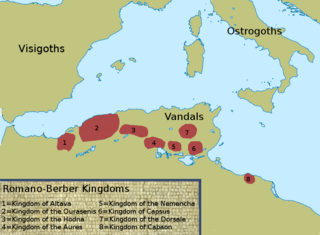
The Kingdom of Altava was an independent Christian Berber kingdom centered on the city of Altava in present-day northern Algeria. The Kingdom of Altava was a successor state of the previous Mauro-Roman Kingdom which had controlled much of the ancient Roman province of Mauretania Caesariensis. During the reign of Kusaila, it extended from Volubilis in the west to the Aurès and later Kairaouan and the interior of Ifriqiya in the east. This Kingdom collapsed following Eastern Roman military campaigns to decrease its influence and power after Garmul invaded the Exarchate of Africa.

The Mauro-Roman Kingdom, also described as the Kingdom of Masuna, was a Christian Berber kingdom which dominated much of the ancient Roman province of Mauretania Caesariensis from the capital city of Altava. Scholars are in disagreement about whether the polity aimed for independence as a kingdom or was part of a loose confederation, an alternative hypothesis drawn from contextual knowledge about Berber tribal alliances. In the fifth century, Roman control over the province weakened and Imperial resources had to be concentrated elsewhere, notably in defending Roman Italy itself from invading Germanic tribes. Moors and Romans in Mauretania came to operate independently from the Empire. However, regional leaders may not have necessarily felt abandoned by the Romans.

The Kingdom of the Aurès was an independent Christian Berber kingdom primarily located in the Aurès Mountains of present-day north-eastern Algeria. Established in the 480s by King Masties following a series of Berber revolts against the Vandalic Kingdom, which had conquered the Roman province of Africa in 435 AD, Aurès would last as an independent realm until the Muslim conquest of the Maghreb in 703 AD when its last monarch, Queen Dihya, was slain in battle.
The Battle of Sufetula took place in either late 546 or early 547, at Sufetula in Byzacena, a province of Byzantine Empire, in what is now Tunisia during the Moorish uprisings against the Byzantines. It was fought by Byzantine forces led by John Troglita, against Moorish rebels led by Antalas. The battle resulted in a crushing Byzantine victory: the Berbers suffered heavy losses, and the battle-standards lost at the battle of Cillium in 544 were recovered by the Byzantines.

















